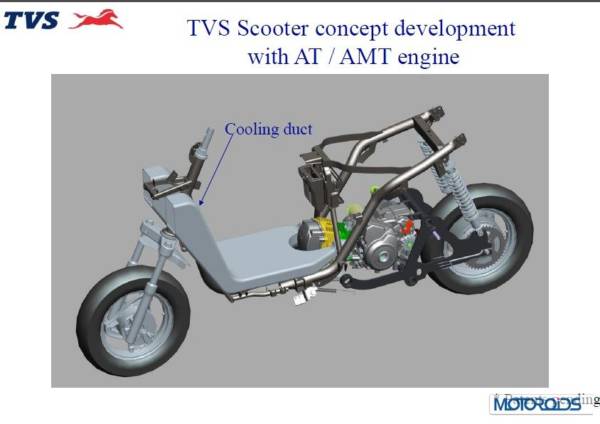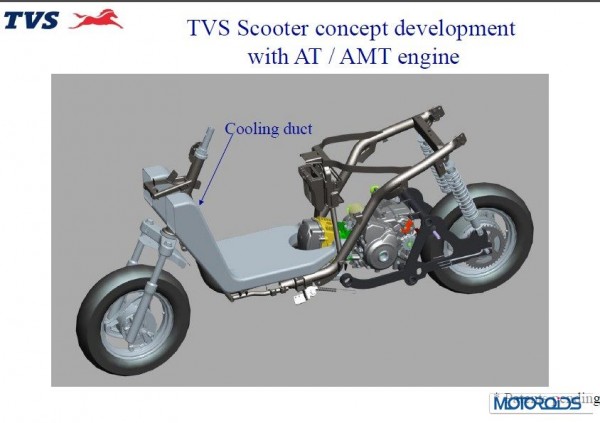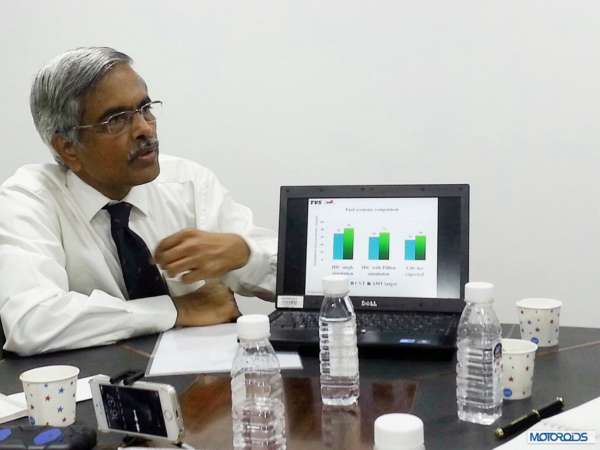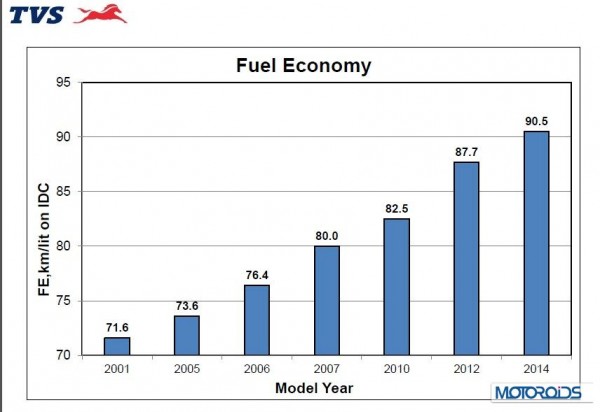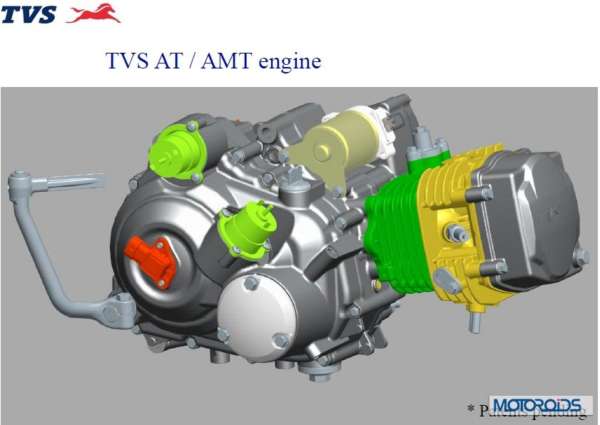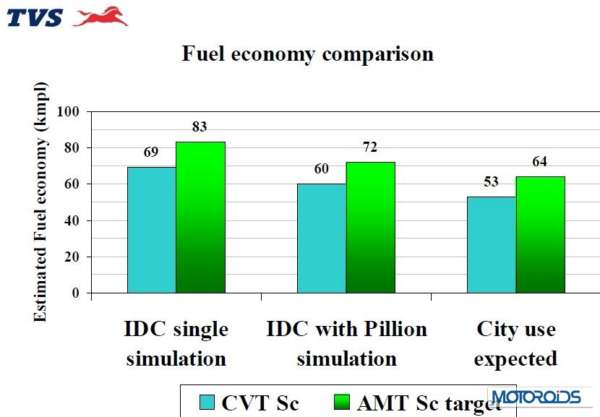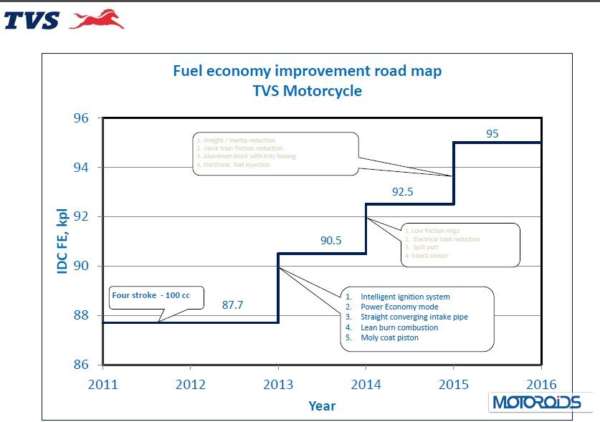Beyond the glitz and the glamour of the exhibit floor show girls, away from the striking Draken and Graphite concepts and hidden away from the visual extravaganza, there also was a very serious team of TVS engineers in the pavilion backrooms. We were invited to engage in a serious discussion with this team about the direction the company is going to take for its future products. Mr Vinay Harne, President of the New Product Introduction (NPI) department at TVS, presented select media an insight into the developments at TVS which will power the upcoming models from the company.
Unlike what one may get instantly inclined to assume, this discussion was not about a 400cc twin cylinder motorcycle, or the production version of the sexy Draken Concept. Instead, the technical discussion was focused towards inducting research driven real-world technologies into upcoming TVS products – including scooters and commuter motorcycles to enhance performance and efficiency.
The central point of the discussion was to lower the operating cost for the customer, meant to be facilitated by better fuel efficiency and reliability. The discussion also included the introduction of new engine and transmission technologies, including an automated manual transmission (AMT) to enhance performance, convenience and efficiency on mainstream two-wheelers.
One of the goals that the TVS engineers are looking at is to take the fuel efficiency under IDC of a specific undisclosed model to about 91kmpl. Worth noting here is that a similar product in 2001 delivered fuel efficiency figure of 71kmpl, and the efficiency figure has been constantly increasing every year with the help of new technologies.
However, it has become difficult for the engineers to push the efficiency bar further. The challenges ahead of automotive engineers to achieve further growth demand that innovation and unrelenting excellence in design is adopted to take the efficiency and performance to the next level. TVS is looking at a target to improve the fuel efficiency by about 30% in scooters. The company envisages achieving those targets using the following approach.
1. By improving the engine & transmission technology, introducing:
• Start stop system
• Liquid cooling
• 3 Valve technology
• Electronic fuel control
• Automated Manual Transmission (AMT) / ECVT
• Hybrid / electric tech
2. By improving engine efficiency, utilizing
• Friction reduction
• Electrical load reduction
• Modified cycle
• Liquid cooling
• Roller follower
• Teflon coated guides
• Longer connecting rod
• Single valve spring
• Moly coated piston
• Hi performance oil
Of these, with the use of the Automated Manual Transmission or AMT alone, TVS is seeking a significant improvement in fuel efficiency. Here’s some insight into what levels of improvements could be expected in fuel efficiency when measured against a CVT on a similar spec vehicle.
IDC single rider CVT 69 kmpl AMT (target) 83kmpl
IDC with pillion CVT 60 kmpl AMT (target) 72 kmpl
City Use CVT 53 kmpl AMT (target) 64 kmpl
As you can see, the use of proposed AMT alone shows a capability of improving the fuel efficiency by an average of 20 percent through various drive cycles.
As regards motorcycles, some enhancements have been made in terms of fuel efficiency in the recent past by employing the following measures. Employing these technologies, TVS has managed to achieve a fuel efficiency figure of 90.5kmpl for its commuter motorcycles under IDC. Here’s the list of key technologies employed to achieve the target
• Intelligent ignition system
• Power Economy mode
• Straight converging intake pipe
• Lean burn combustion
• Moly coat piston
In the coming year (2014-15), TVS plans employ the following technologies to improve the FE further by 2.5 percent under IDC
• Low friction rings
• Electrical load reduction
• Split port
• Knock sensor
In the longer term, with an eye on year 2016, the company plans to adopt further measures to take the IDC FE figure for motorcycles to a commendable 95kmpl. Here’s what you can expect to see in the TVS commuter motorcycles
• Weight / Inertia reduction
• Valve train friction reduction
• Aluminum block with Poly honing
• Electronic fuel injection
Expect all of these technologies to filter into the upcoming scooters and motorcycles in close future. Count on us to keep you posted about the new products which will essentially be the fruits of TVS’ unrelenting R&D on its new products.

